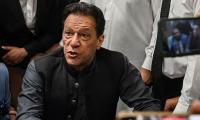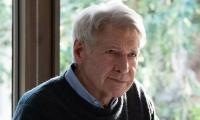The partition of the Subcontinent is still painful for millions across the border. They still remember the loss of homes and places they were born and lived in. Millions suffered in the process; were Gandhi, Nehru, Jinnah and Sardar Patel not able to predict what would happen? What was in making – the mass migration of families, and the resultant loot and plunder of properties and souls?
Seventy years after Partition, Sindh and its society has not recovered from the damage communal politics had caused. Migration destroyed very fabric of Sindhi society, because Sindhi Hindus were the most educated in the area. They were entrepreneurs, active in the arts and in music and theatre. Sindhi Hindus were pioneers of remarkable educational institutes – from NED to DG Science College – and hostels and hospitals, being at the forefront in all socio-cultural and welfare initiatives. A middle class which was formed in the process of history, it was gone within a few months. What was left was only a rich political elite and impoverished peasants living in rural areas. That gap has not yet been filled in Sindhi society.
Up to one million Sindhi speaking Hindus were forced to migrate to India, an unknown land for them. Though Sindh had remained part of the Bombay Presidency from 1848 to 1935, Sindhi Hindus were never integrated in the mainland of India. It was only the politics of Congress and the Muslim League which divided Sindhi speakers on communal lines in the Sindh province.
For centuries, Sindhi Hindus and Muslims lived together in Sindh in harmony, sharing culture, language, literature, heroes and legends. Although after the arrival of Muhammad Bin Qasim and over-throw of the Hindu dynasty led by Raja Dahir, Sindhi Hindus never ruled Sindh again, they lived in harmony with the rulers who happened to be Sindhi-speaking Muslims. It is surprising that there has not been a noticeable conflict among them spurred by a difference in religious beliefs.
In today’s Sindhi society, Sindhi Hindus live a life of fear. Their contribution towards literature and socio-cultural progress has declined. Sindhi Hindu women are mostly confined to their homes; there are a few well-known families whose women remain active in society and in politics, but the majority is invisible, Like the Sindhi feudal who never brings women into the professional sphere, Sindhi Hindus too never make them part of their political campaigns.
It is painful for Sindhi Hindus to be seen as a minority in their historic homeland. Some affluent Hindus migrated to India recently fearing forced conversion of their girls and kidnappings of their sons, but they were in a few thousands – the majority still live in Pakistan where their roots are. A friend in Karachi once remarked, “I keep telling family and friends we won’t leave Sindh no matter what happens. We should be brave enough to face the challenges, but it breaks my heart when my 8-year-old son’s class fellows in Karachi’s upper middle class school do not invite him in their birthday parties because he is a Hindu.”
Muhammad Ali Jinnah was prophetic when he warned secular Babu ji Gadhi “do not bring religion into politics” during the Khilafat movement. What happened is a history that still haunts us. Leadership in the pre-Partition days played with communal fire, and burnt human lives, dreams, homes and future. We – the people of India and Pakistan – continue to be hostage to the past. And looking at today’s political temperatures and the kind of leadership we have, one does not find much hope that it will move us forward towards a peaceful coexistence at the borders that allows people to cherish a shared history.
During Shaukat Aziz’s time as prime minister, Karachi University’s Shah Abdul Latif Chair had hosted an international conference on Shah Latif, inviting Sindhi scholars from India, but many were denied visas. In his angry inaugural speech, the then vice chancellor of Sindh University Jamshoro Mazharul Haq Siddiqui asked the establishment if their loyalty and patriotism was in question.
In the past few years there has been some very good literature on the subject of Partition and in particular migration from Sindh of Sindhi Hindus, a perspective which has remained absent from mainstream Partition discourse. Lachhmal Komal, an Indian Sindhi journalist, wrote a few years back an account of his migration story, his birthplace in Kandiaro (Sindh), the political movements in the 1940s, details on Congress’ ‘Quiet India Movement’, a sociology of Sindhi society and his later life in India. After 65 years, his Sindh Yatra was not less than a miracle for him.
Saaz Agarwal, another writer from India, who was married into a non-Sindhi family, wrote after his mother’s death an authentic account of her migration. The book was published in different titles in India and Pakistan. In Pakistan, it goes by: ‘Stories of [a] lost homeland’ and in India it was titled ‘Stories of [a] vanished homeland’. My first reaction to her book was ‘neither lost nor vanished, suppressed and distorted identity, culture and language’. Another wonderful work was produced by Nandita Bhavnani on the migration of Sindhi Hindus – titled ‘The Making of Exile’. And yes, it is exile for people who had not dreamed of going to a promised land. Thousands left the keys of their homes with their neighbours, thinking they would return once the situation had improved. They could not foresee that their exile would never end.
Email: mush.rajpar@gmail.com
Twitter: @MushRajpar
MPAs ask for their salaries and benefits to be at par with high court judges and exempt from tax
This system fosters and places premium on VIPs, facilitating VIP culture, which is alive and kicking
Imagine this waste covering over 15,500 cricket stadiums, piled three meters deep every year
If there is one thing that can be gleaned from politics today, it is that we no longer speak same language
Postman argues that “typographic mind” was yielding to “televisual mind”
Pakistan is well poised to meet opportunities that Artificial Intelligence will offer for developments in industries







